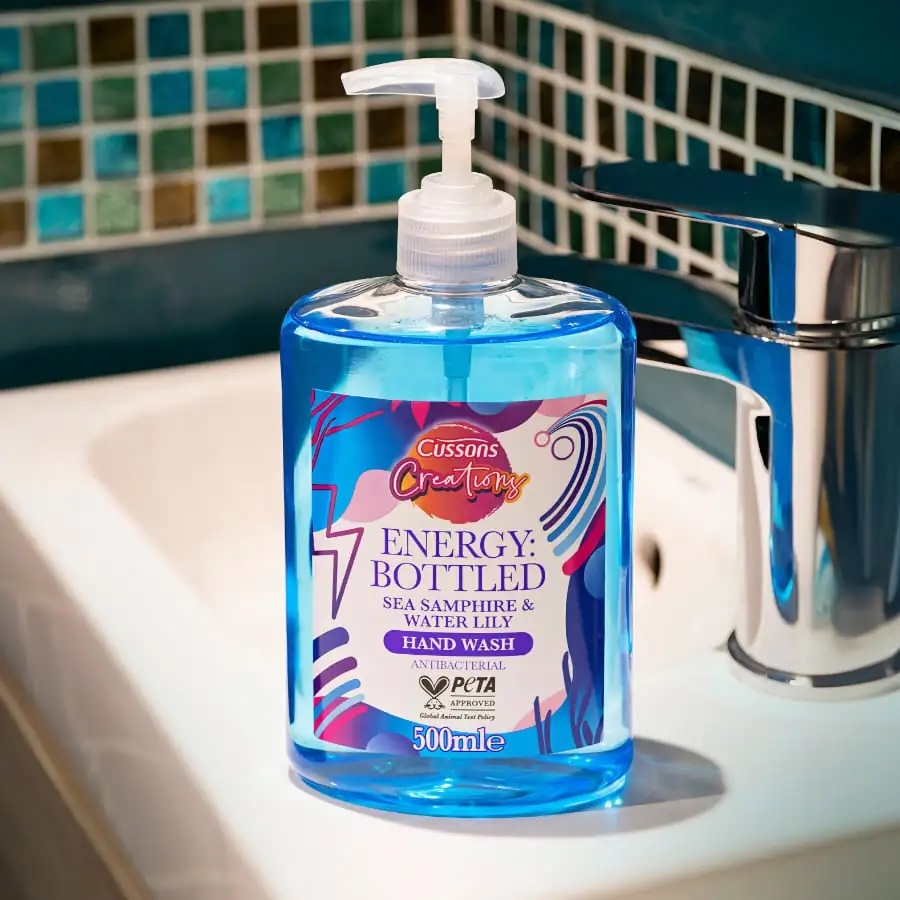Everyday essentials: How PZ Cussons meets Africa’s evolving needs
PZ Cussons East Africa balances sustainability with affordability and stays ahead of regional packaging trends by working closely with technology providers.

PZ Cussons, an international consumer goods business originating in Africa since 1884 and headquartered in the UK, owns several well-known FMCG brands, including Carex, Childs Farm, Cussons Baby, Imperial Leather, Original Source, Premier, Sanctuary Spa and St Tropez.
Labels & Labeling visited the PZ Cussons East Africa facility in Nairobi, led by managing director Sekar Ramamoorthy, for an in-depth look at the brand’s competitive strategy and evolving packaging trends across the region.
‘Kenya is truly a hub of innovation,’ says Ramamoorthy. ‘But it’s also a tough environment for multinationals. One of the leading skincare brands, for example, shut
down one of its best factories in Africa in December 2024 and is now sourcing its products in the region from factories in Spain and Egypt. The cost of manufacturing in Kenya has been rising, discouraging manufacturing in the region.’
In Kenya, consumer buying power continues to shrink due to rising costs and inflation. This, combined with high compliance and operational costs for multinationals, makes doing business in the country challenging.
Start-up companies are seizing this opportunity and growing fast by offering competitive pricing and challenging legacy brands.
Kenya is the second-largest retail market in Africa, after South Africa. Its modern retail sector is comparatively more evolved than in West Africa or neighboring countries helping drive consumer sophistication. The country’s open trade policy also supports fast-paced innovation.
Brands can import any product within 48 hours, provided duties are paid. While West Africa is more influenced by the US, East Africa is shaped by European, Middle Eastern and Asian markets.
Sustainability measures
As a multinational brand, PZ Cussons has implemented several sustainability measures at its production facility in Kenya.
The brand has reduced plastic in its product packaging by 25 to 30 percent, replacing it with fillers such as talcum powder. The next step for the company is moving to recycled plastic.
‘We are the first soap manufacturer in Africa to operate entirely without fossil fuels. Instead, we use biomass from macadamia nut shells, a seed grown in only three countries: Kenya, Australia and Colombia. The steam from macadamia seeds can replace fossil fuel in producing high-energy products, such as soap,’ Ramamoorthy says.
PZ Cussons is also the first chemical company in East and parts of West Africa to achieve zero effluent discharge, says Ramamoorthy. All water used in the factory is fully recycled, a major milestone given the high water demands in cosmetics and personal care manufacturing.
Sustainability comes at a cost, and in Africa, that cost can’t be passed to the consumer yet. The continent is still in the early stages of consumer evolution, and pushing sustainability too hard, without support or scale, can actually backfire. So why burden it with sustainability costs it can’t absorb
The brand has not yet mandated sustainable label materials in the region, but it engages closely with local converters and material suppliers to stay at the forefront of technology.
‘While label consumption is low, 90 percent of our labels are now paper-based, the East African climate is extremely harsh, with intense UV and heat posing durability challenges for label materials,’ Ramamoorthy adds.
Cost implications of sustainability
However, Ramamoorthy explains that sustainability comes with some tradeoffs.
‘Sustainability comes at a cost, and in Africa, that cost can’t be passed to the consumer yet. Despite comprising 15 percent of the world’s population, Africa uses less than 1 percent of the global labels and plastics. The continent is still in the early stages of consumer evolution, and pushing sustainability too hard, without support or scale, can actually backfire. So why burden it with sustainability costs it can’t absorb,’ he asks.
‘In Europe or the US, consumers may pay a premium for sustainability, but in Kenya, they won’t. Most of us follow global frameworks under pressure, but telling a Kenyan consumer, “Pay more because we’re sustainable”, simply doesn’t work.’
According to Ramamoorthy, sustainability will not become a concern in the region for another 15 to 20 years unless the local government mandates it.
He points to the example of the Kenyan government banning plastic bags. ‘It happened almost overnight, and they disappeared,’ he says.

In Kenya, plastic is considered a luxury product; therefore, PZ Cussons and other brands are required to pay a 10 percent luxury tax on plastic bottles. The same applie to paper and folding cartons. These materials are all taxed as luxury items, which indirectly increases packaging costs.
There are no incentives for switching to eco-friendly materials unlike markets such as India that have developed scalable, cost effective sustainable solutions. Still, efforts for recycling are being made in the region. PZ Cussons’ factory waste is under 1 percent, and all materials, including plastic and paper, are sent to local recyclers.
‘Kenya’s recycling ecosystem, especially for paper and [folding] cartons, is gradually evolving with decent collection infrastructure already in place. The government is also pushing to phase out single-use plastics, encouraging a shift toward paper-based alternatives, such as cups.
‘Scale remains a challenge. Kenya’s packaging industry can’t yet match European standards because the market size doesn’t justify those investments. That said, Kenya is unique; 93 percent of its electricity comes from sustainable sources, primarily geothermal and hydroelectric, with minimal reliance on coal,’ Ramamoorthy adds.
Innovation
In Kenya and parts of West Africa, purchasing power remains low, but aspirations are high, driven by a connected world. Despite this gap, the market remains highly innovative.
‘Innovation is essential in Kenya. Businesses can’t survive here on price alone. East Africa, especially Kenya, demands constant evolution. I visit Uganda monthly, and while the market is growing, Kenya leads in innovation,’ notes Ramamoorthy.
Local converters largely drive innovation in labels and packaging technology in Kenya. PZ Cussons works closely with partners, such as Skanem, which regularly conducts technical workshops on label and packaging trends.
‘The beauty is, local label and flexible packaging converters stay ahead of the curve, both in product and machinery innovation,’ Ramamoorthy says of his suppliers.
Importing packaging isn’t a viable option for many local brands, because import duties are around 50 percent. Consequently, brands have to rely on what local converters can offer and how they can co-develop packaging together.
‘For example, I introduced single-use spout pouches for dishwashing and handwashing liquids. I brought in the first batch from India, and once volumes picked up, a local supplier invested in the machinery to manufacture flexible packaging with a spout. That’s how innovation works here. If I can prove scale, partners are willing to invest and grow with us,’ Ramamoorthy explains.

He adds that appreciation for packaging as an industry is low in East Africa. While leading converters in the region are flagbearers of technical knowledge and innovation, end users and brands often lack the understanding needed to drive innovation. Unlike in India, Europe, or the UK, where FMCG companies work hand-in-hand with converters to shape the industry, here, it is the converters who push innovation on their own. As a result, the overall packaging knowledge base remains limited.
In October 2024, Flint hosted an innovation workshop during Skanem’s factory launch, which helped the brand explore new materials and print techniques.
‘That’s the core challenge here. There is a lack of technical packaging knowledge and limited effort from large suppliers to educate or support the local industry. I reached out to Flint through my network and brought in its representatives to give my team session on ink technology,’ Ramamoorthy recalls. ‘And they were completely spellbound. They had no idea how much science and technology go into creating color. The Flint team explained everything from ink curing and UV-safe formulations to responsible consumption. It was eye-opening.’
That’s how innovation works here. If I can prove scale, partners are willing to invest and grow with us
With limited packaging knowledge in the region, PZ Cussons supports skills development and has partnered with Mount Kenya University to launch a master’s program in cosmetic technology, with the hope of expanding into packaging education.
Another interesting trend is the move toward QR codes, which are now becoming mandatory in Kenya. PZ Cussons sits on the technical committees of both the Kenya
Bureau of Standards and the East African Bureau of Standards. These two bodies set the most widely accepted packaging and labeling standards in the region, and PZ Cussons works closely with them to support the evolution of barcode and traceability regulations. The barcodes will become mandatory in the next two to three years.
The future of packaging in East Africa will not be driven solely by global mandates but will also rely on efforts by the local government and technology providers. With increased education, innovation from local converters and support from brands, the region’s packaging and labeling industry is poised for growth.
Stay up to date
Subscribe to the free Label News newsletter and receive the latest content every week. We'll never share your email address.


